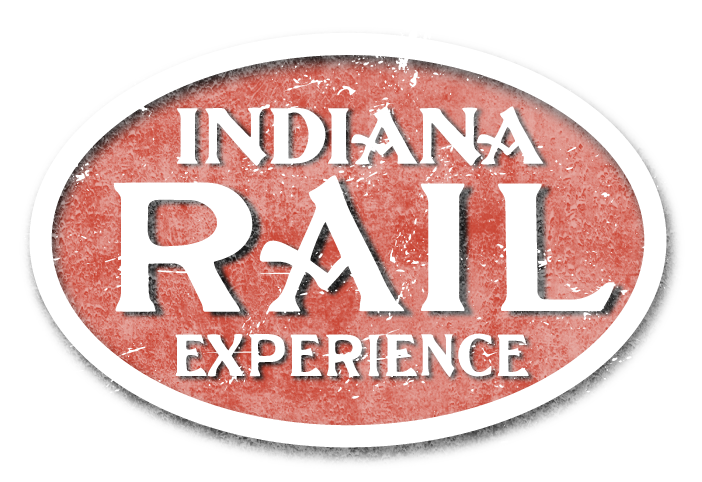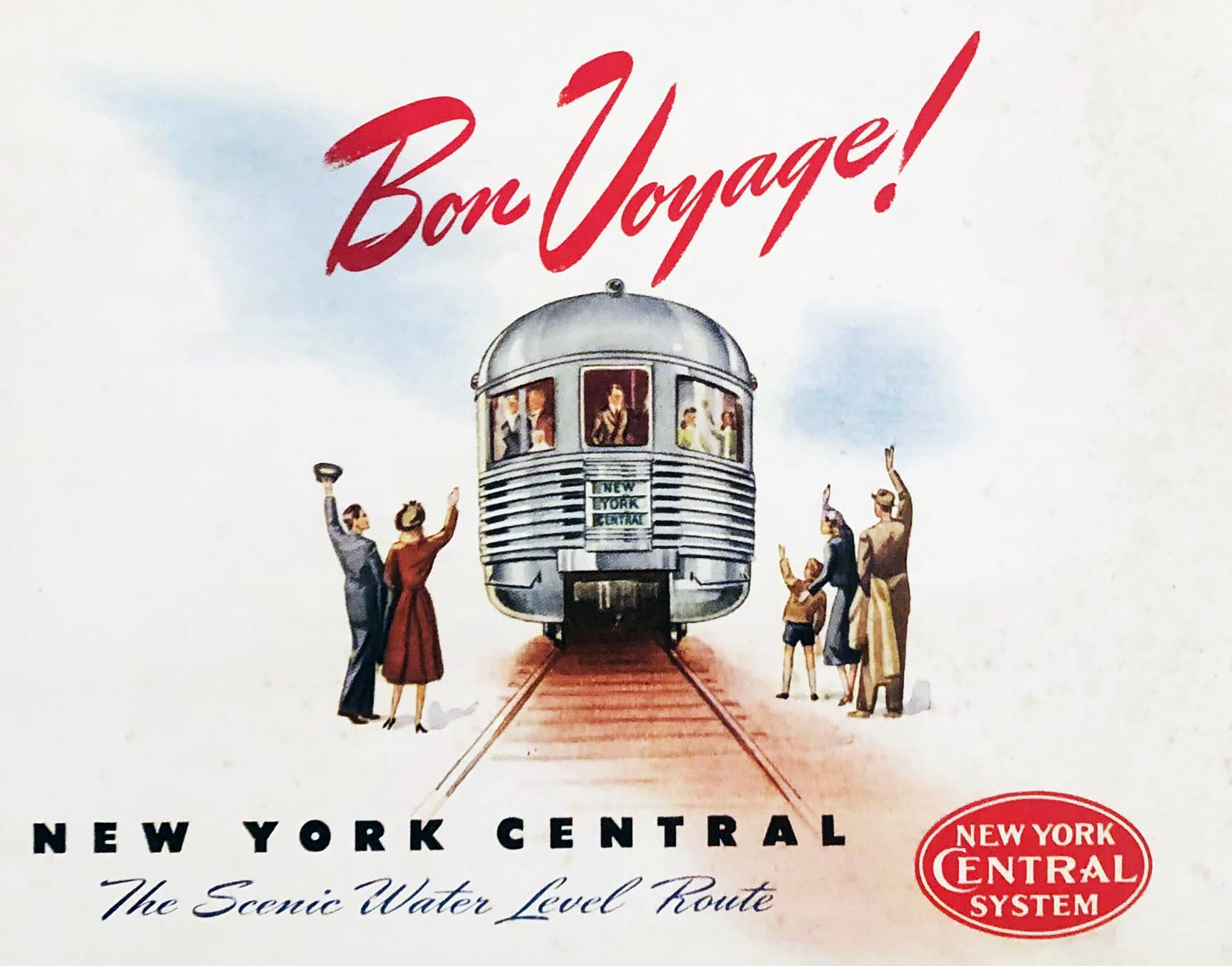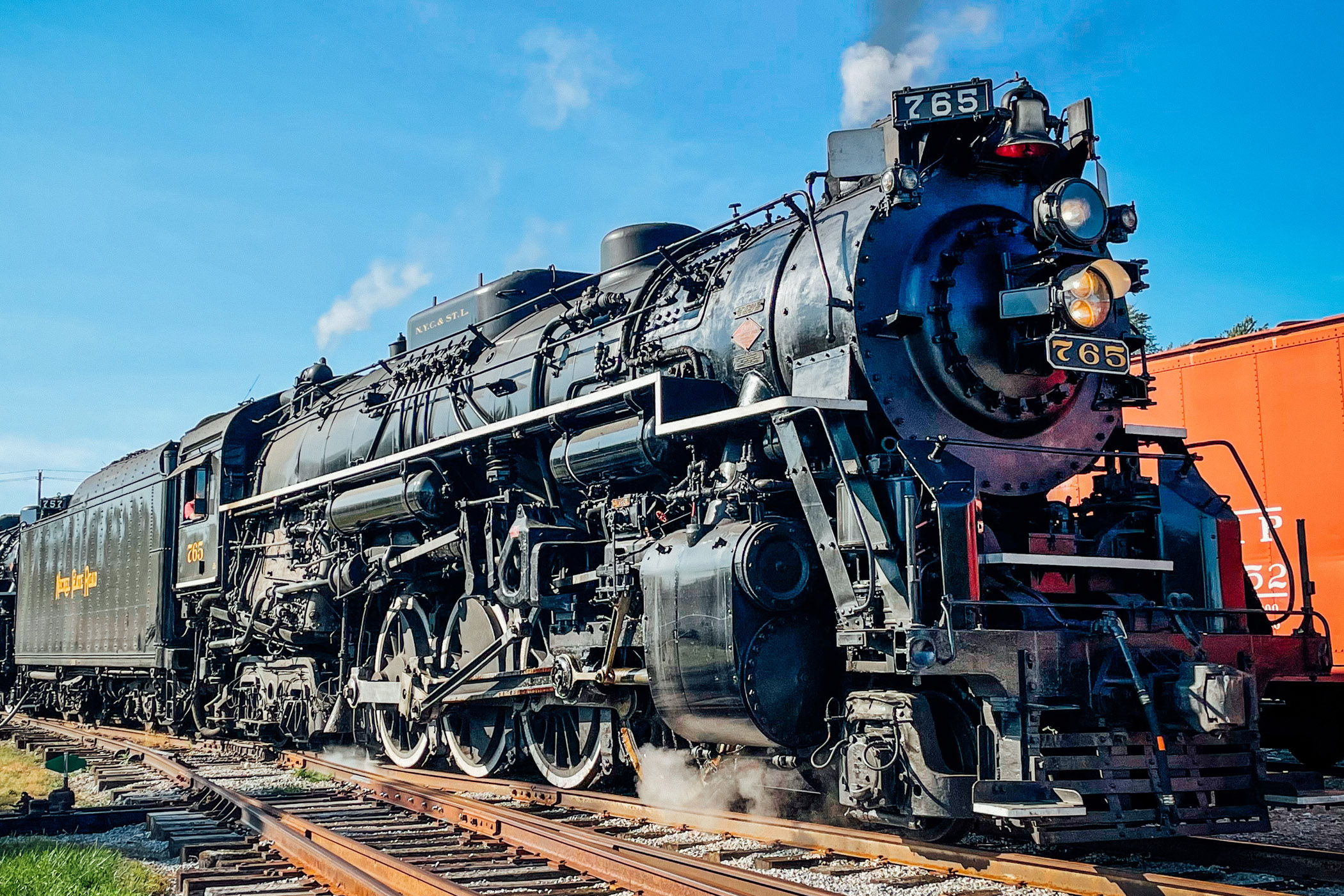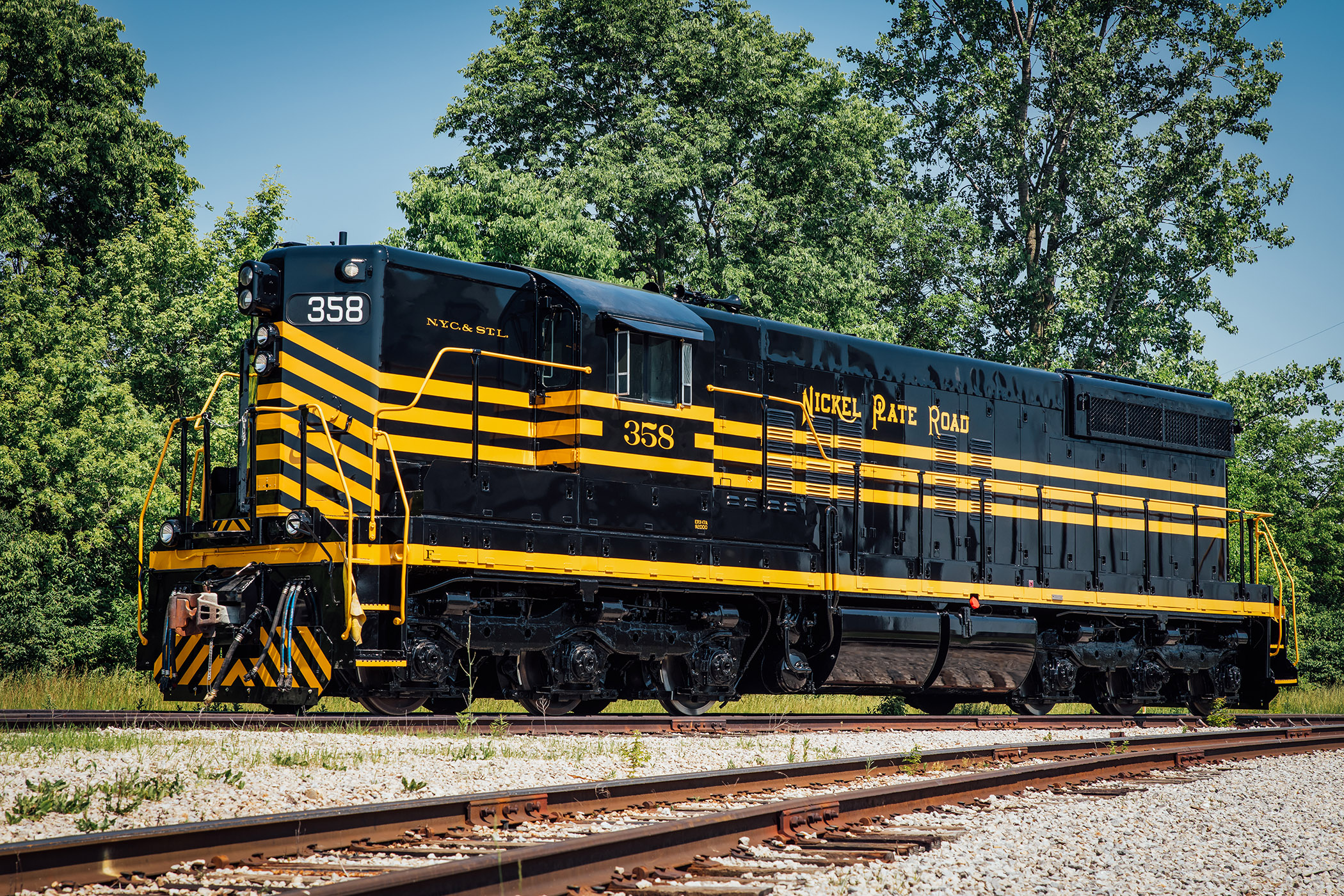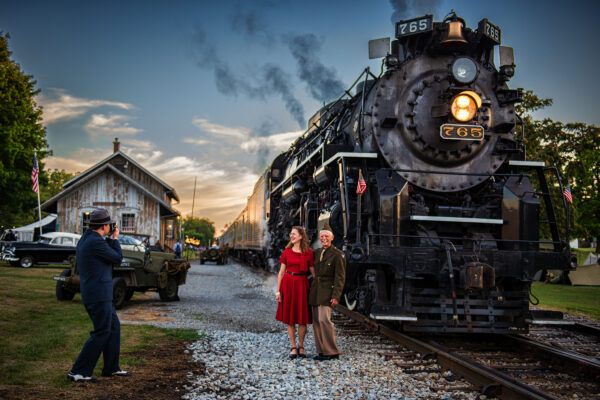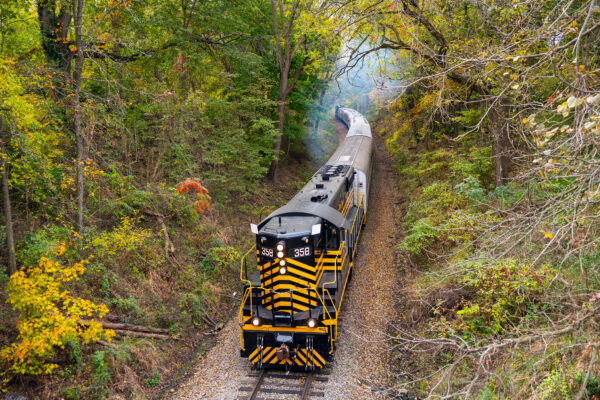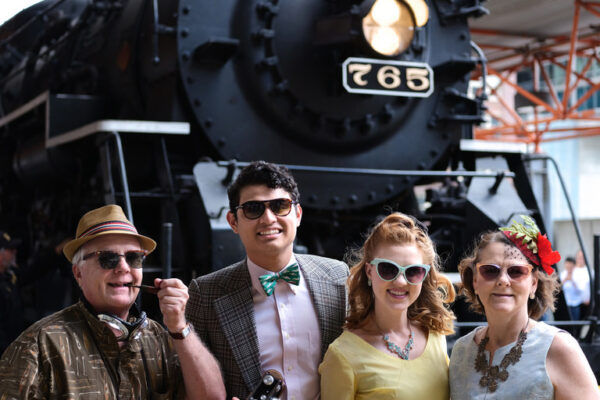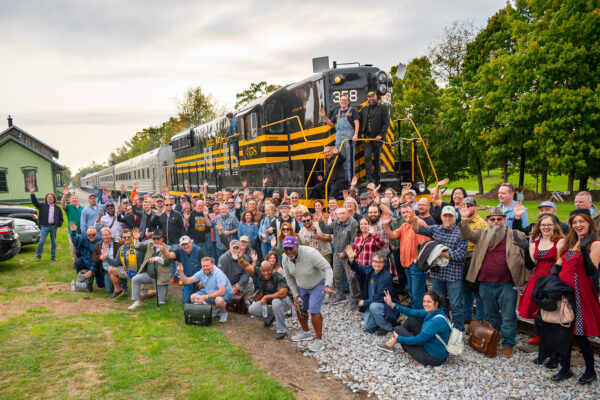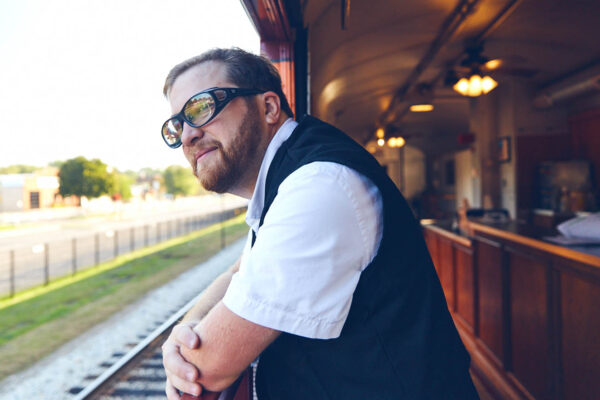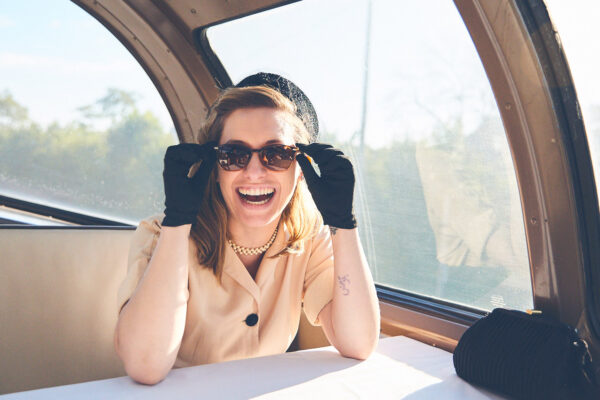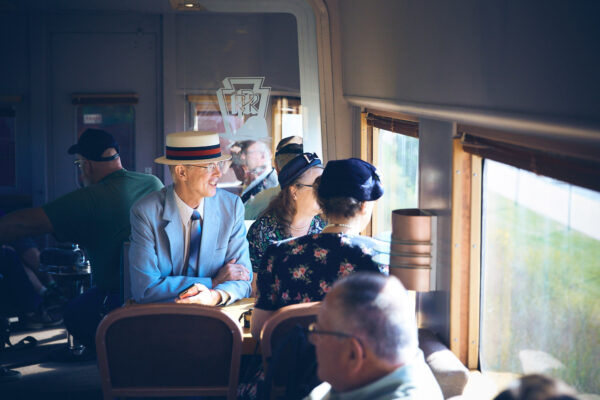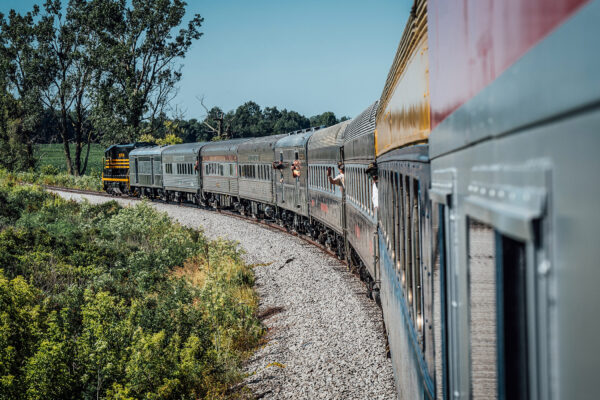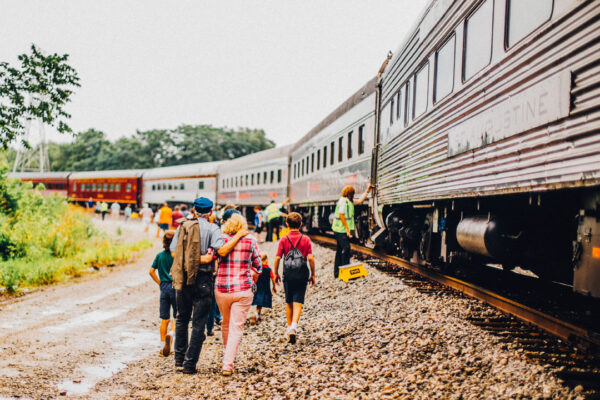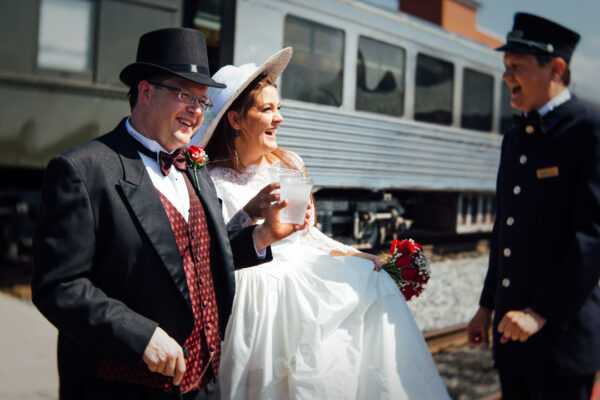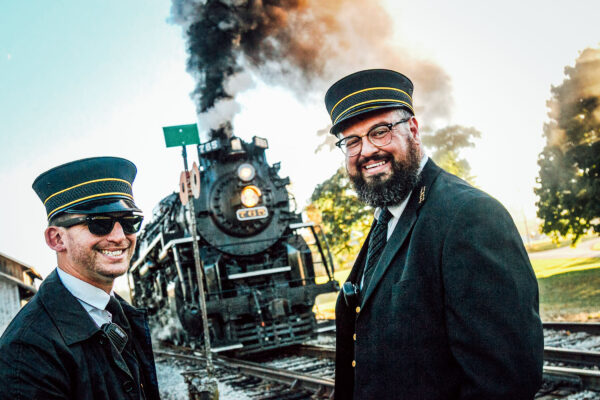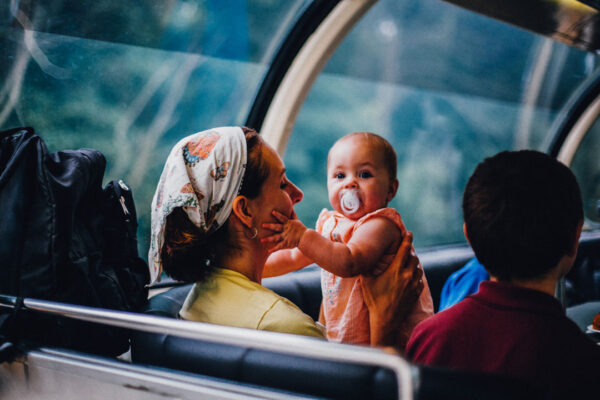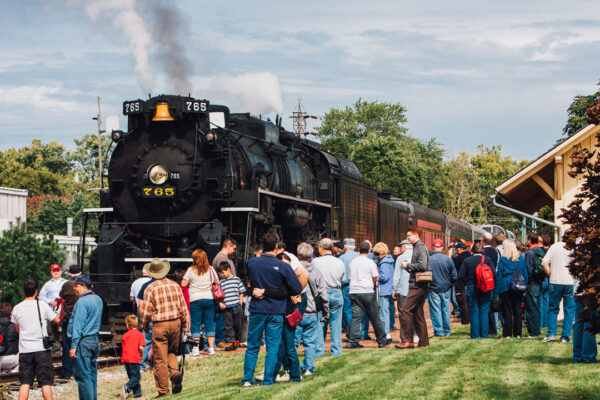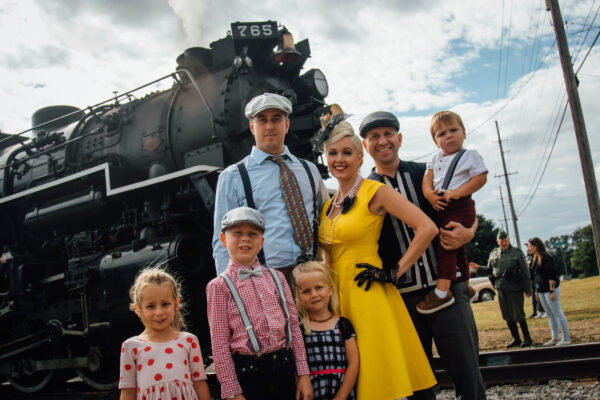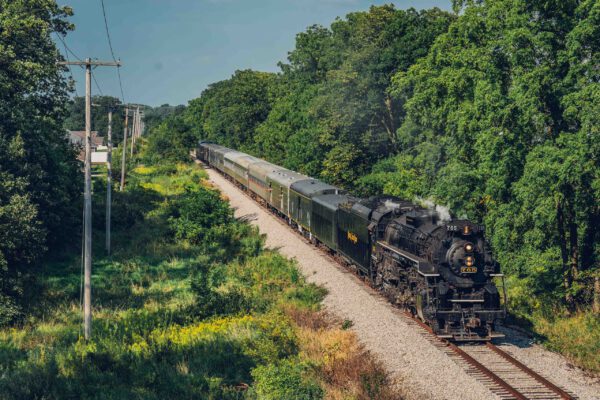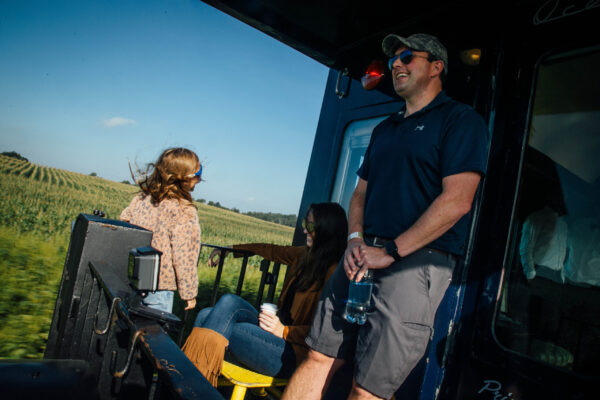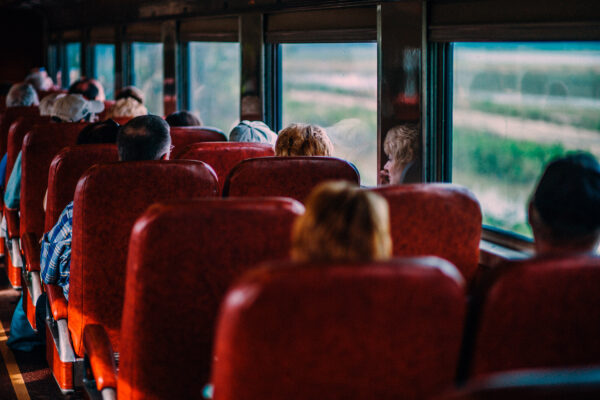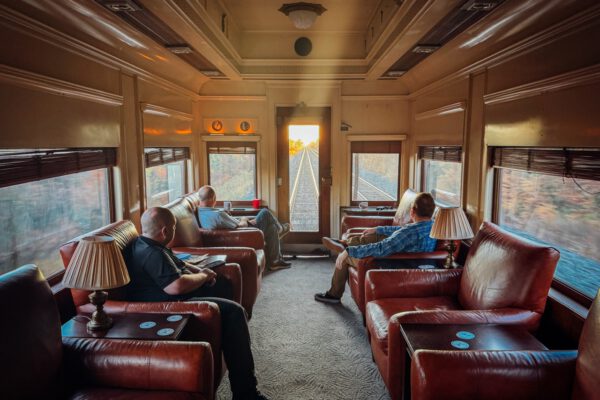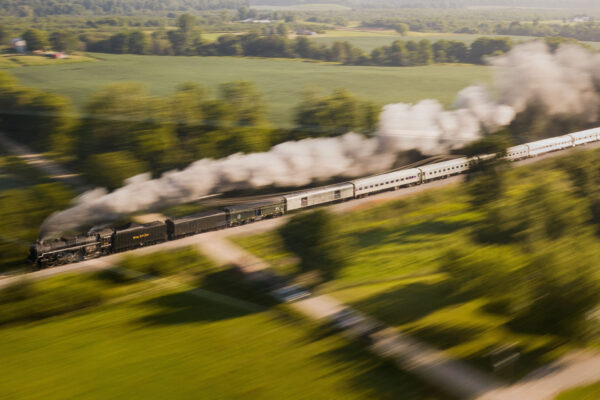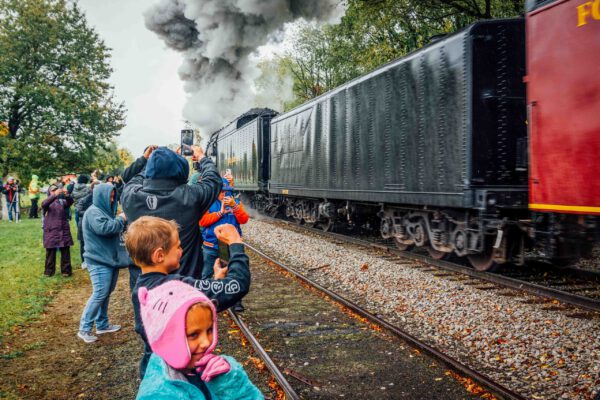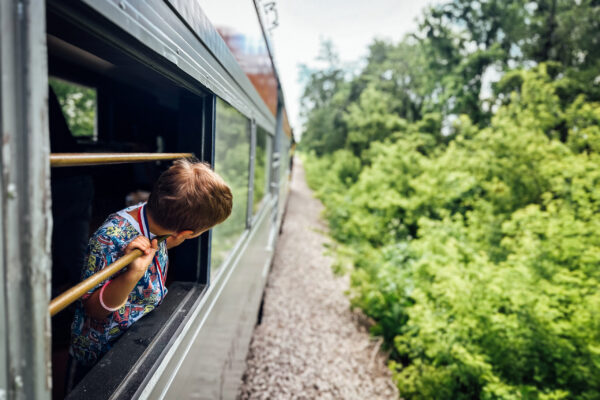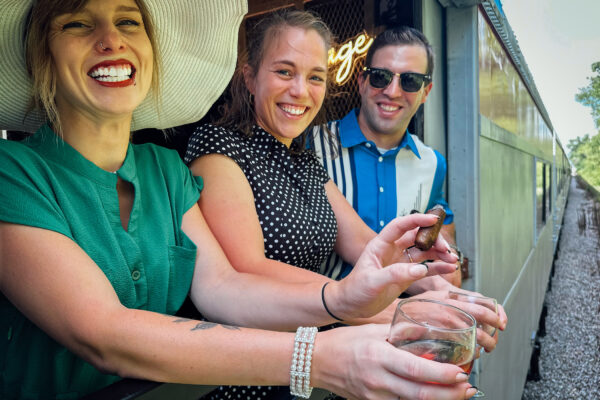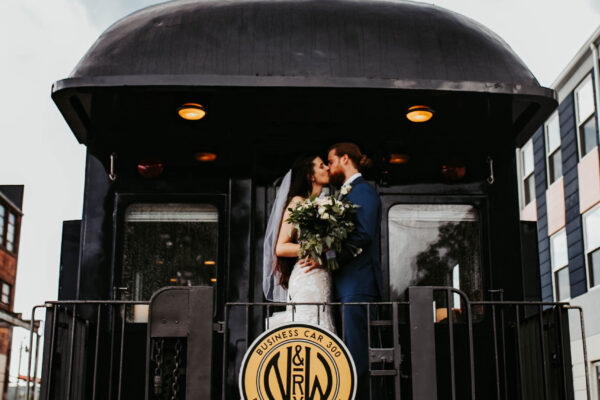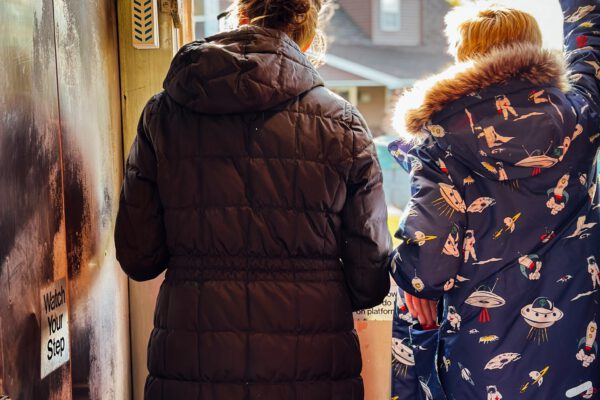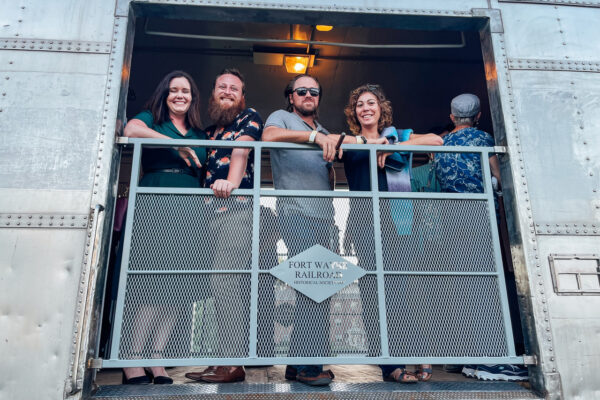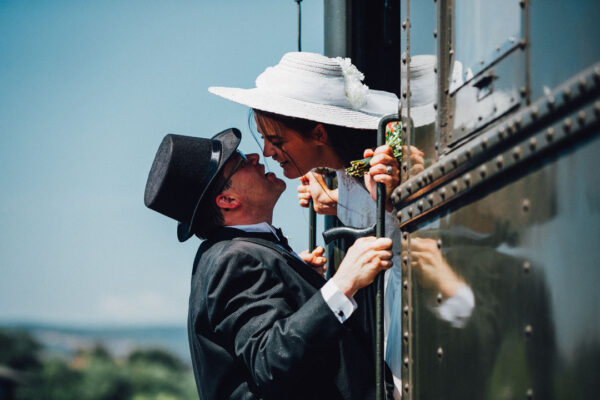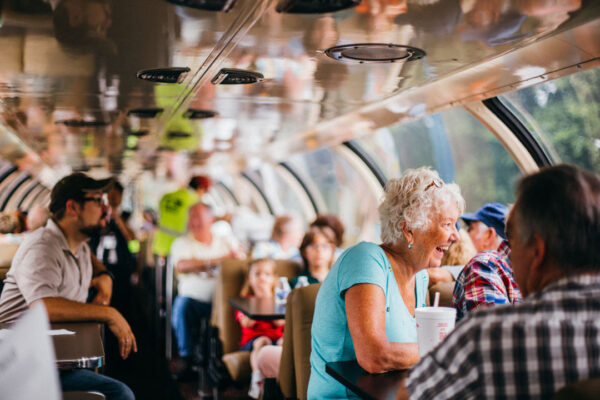Constructed in 1949 by the Budd Company in Philadelphia, the Collinsville Inn and Franklin Inn, were built initially as sleeping cars for the Pennsylvania Railroad’s famous passenger trains, several of which operated through Fort Wayne, Indiana.
In 1963, Pennsylvania converted the cars into traditional passenger coaches to transport visitors to the 1964 World’s Fair in New York. Later, they were assigned to commuter train services in Michigan, New York, and Maryland before they were donated to DCNRHS in 2008. Thanks in part to a 2012 Trains Magazine grant to “introduce new generations of rail enthusiasts to the history and excitement of mainline rail travel,” the cars were restored to their 1960s appearance and certified for use on Amtrak.
Both Inn cars feature limited ADA-capable seating and the Collinsville Inn has one ADA-capable restroom.
The Inn cars are joined by the recently renovated New York Central No. 2568, which features oversized windows, a restroom, and unique walk-over seats, allowing guests to change the direction of each seat. 2568 was part of the Central’s “Great Steel Fleet” of passenger cars, which were commonly seen on the Water Level Route in Northeast Indiana in Waterloo, Butler, and Elkhart, Indiana, as well as Hillsdale, Jonesville, Quincy, and Coldwater, Michigan. The reconditioning of 2568 cost over $330,000 and lasted two years.
2568 was constructed for the New York Central’s Empire State Express fleet and debuted on December 7, 1941. The Empire State Express cars were designed to offer “streamlined luxury and everyday travel,” and were among the few stainless steel streamlined trains powered by steam.
Car 2568 was converted for commuter service in the 1960s, which included modifications to its interior and an expansion of its seating capacity. The car has been refurbished to this configuration to retain its capacity and still retains the baggage racks and lighting from the 1940s.
The Fort Wayne Railroad acquired this car — along with six others from the original 1941 fleet — in 2022, thanks to a partnership with the Rochester & Genesee Valley Railroad Museum. Plans call for the remainder of the Empire State Express fleet to be restored in a manner faithful to their original first-class configurations, which will include a lounge car and table car.
